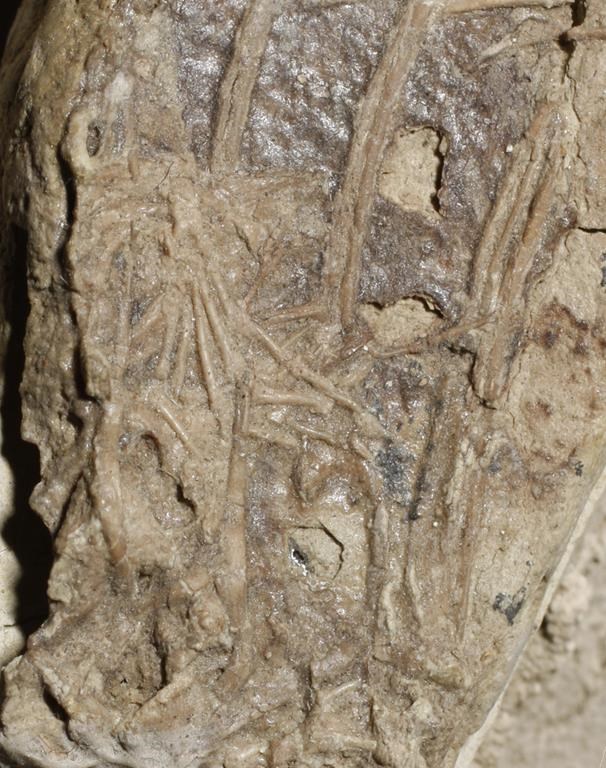Dining dinosaur fossil has mammal in belly, sheds light on ancient ecosystems
Advertisement
Read this article for free:
or
Already have an account? Log in here »
We need your support!
Local journalism needs your support!
As we navigate through unprecedented times, our journalists are working harder than ever to bring you the latest local updates to keep you safe and informed.
Now, more than ever, we need your support.
Starting at $15.99 plus taxes every four weeks you can access your Brandon Sun online and full access to all content as it appears on our website.
Subscribe Nowor call circulation directly at (204) 727-0527.
Your pledge helps to ensure we provide the news that matters most to your community!
To continue reading, please subscribe:
Add Brandon Sun access to your Free Press subscription for only an additional
$1 for the first 4 weeks*
*Your next subscription payment will increase by $1.00 and you will be charged $20.00 plus GST for four weeks. After four weeks, your payment will increase to $24.00 plus GST every four weeks.
Read unlimited articles for free today:
or
Already have an account? Log in here »
Hey there, time traveller!
This article was published 21/12/2022 (1087 days ago), so information in it may no longer be current.
EDMONTON – A rare fossil of a dining dinosaur is shedding new light on ancient ecosystems and behaviours.
“It’s one of the few things that really give you an idea of ecology and behaviour in the fossil record,” said University of Alberta paleontologist Corwin Sullivan, who describes what he and his colleagues found in the belly of a 120-million-year-old Microraptor Zhaoianus in a newly published paper.
Zhaoianus (pronounced zhay-OHN-us) was a crow-sized, birdlike dinosaur. Fully fledged but with a bony tail and a jaw full of sharp little teeth instead of a beak, it likely glided around the forests, swamps and lakeshores of the early Cretaceous era.

“It’s transitional between dinosaurs and birds,” Sullivan said.
This particular Zhaoianus was part of a huge fossil collection in an institute in China where Sullivan and his co-authors worked. It had never been carefully examined until they took a closer look.
Inside the dinosaur’s belly was the unmistakable ankle and foot of a mammal.
“It’s got a well-defined heel,” said Sullivan. “And the toes — there are no more than three toe bones in each digit, which matches the condition in mammals but not in reptiles.”
It’s rare to find any dinosaur intact, said Sullivan, rarer still to find a small, intact dinosaur.
“There’s a ferocious bias against any small delicate animals being preserved in the fossil record. Their bones just fall apart.”
The odds against finding a small, intact fossil with an even smaller intact fossil of its last meal are astronomical, Sullivan said.
“Just think of what has to happen. The fossil carnivore has to be fairly intact — the rib cage at least fairly preserved. The fossil has to be of an individual that had a meal shortly before death.
“And that meal had to have had hard bones or shells so it will be preserved.”
As it happens, there are a couple of other Zhaoianus fossils from the same fossil bed as this one. Sullivan said that’s likely because they were all found in the bed of what used to be an ancient lake, an ideal environment for fossilization.
But those other fossils contained birds, lizards and fish. This is the first mammal found in the belly of a Zhaoianus.
The foot in its belly doesn’t look as if it came from a climber, so maybe the raptor dropped down from the sky in its hunt. Or maybe the dinosaur was simply gobbling down carrion it didn’t have to kill at all.
The finding shows Zhaoianus was opportunistic and dined on whatever it could, not unlike the crow it superficially resembles.
“Microraptor was running or possibly gliding around, feeding on many different kinds of vertebrates,” Sullivan said. “It wasn’t specialized and that’s interesting.”
It may suggest the same was true of other microraptors, he said.
But quite apart from its scientific value, Sullivan finds the fossil compelling because it captures a moment millions of years old, a tiny pixel from a bigger picture of a long-lost world.
“That makes it neat,” he said.
“A lot of the specimens I work with are skeletons or parts of skeletons that don’t contain behavioural signals. When you see a specimen like this, that individual microraptor ate that individual mammal. We have an interaction between two vertebrates. And that’s rare.”
This report by The Canadian Press was first published Dec. 21, 2022.
— Follow Bob Weber on Twitter at @row1960
